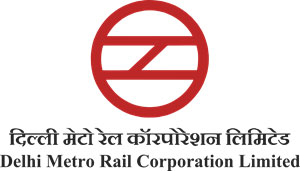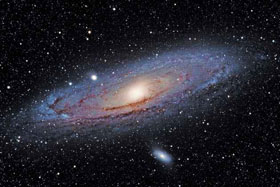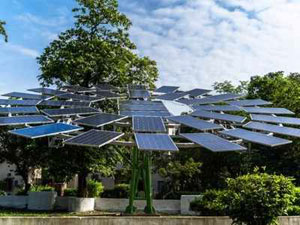September 2020 Science and Technology
Sakshi Education

- i-ATS (Automatic Train Supervision)
The Delhi Metro Rail Corporation (DMRC) launches first indigenously-built communication-based train control with the launch of i-ATS — the first Made-in-India signalling system.
The ATS (Automatic Train Supervision) is a computer-based system, which manages train operations, including basic functioning such as running and halting.
The i-ATS will significantly reduce the dependence of Indian Metros on foreign vendors dealing with such technologies.
It can work with train control and signalling systems of different suppliers, which ensures that in case of a snag, the operators will not have to depend on foreign manufacturers.
The i-ATS can also work with different levels of technology of train control and signalling systems.
Technology systems such as the CBTC, which are also currently in use in the Delhi Metro corridors, are primarily controlled by the European countries and Japan.
- Biotech-KISAN Programme
As per the information shared by the Union Minister of Science and Technology in Lok Sabha, Biotech-Krishi Innovation Science Application Network (Biotech-KISAN) programme plays an important role in taking innovative biotechnologies to the farmers.
Key Points
Biotech-KISAN programme is a farmer-centric scheme for farmers, developed by and with farmers under the Department of Biotechnology, Ministry of Science and Technology.
It is a pan-India program, following a hub-and-spoke model and stimulates entrepreneurship and innovation in farmers and empowers women farmers.
It has a unique feature to identify and promote local farm leadership in both genders. Such leadership helps to develop science-based farming besides facilitating the transfer of knowledge.
Aim: To understand the problems of water, soil, seed and market faced by the farmers and provide simple solutions to them.
The programme links available science and technology to the farm by first understanding the problem of the local farmer and then providing scientific solutions to those problems.
The Biotech-KISAN hubs are expected to fulfil the technology required to generate agriculture and bio-resource related jobs and better livelihood ensuring biotechnological benefits to small and marginal farmers.
Currently, there are a total of eight Biotech-KISAN Hubs in different Agro-climatic Zones.
- The square kilometre array (SKA)
The square kilometre array also called the SKA, an international initiative building the world’s largest radio telescope is to have control systems designed and built by Tata Consultancy Services, India.
Details
The National Centre for Radio Astrophysics (NCRA) of the Tata Institute of Fundamental Research (TIFR) is the lead Telescope Manager (TM) of the project, while other institutes like Raman Research Institute (RRI) and the Indian Institute of Astrophysics (IIA) in Bengaluru, Inter-University Centre for Astronomy and Astrophysics (IUCAA) in Pune, multiple IITs, among other Indian institutes are scientific partners.
The NCRA-TIFR is developing the central nervous system of the telescope, that is, the control systems that will power the telescope.
Funded by 15 member countries, including India and China, SKA will feature two sets of instruments — in Australia and South Africa — and will be run from the project headquarters in the UK.
Square Kilometre Array
The Square Kilometre Array (SKA) is an intergovernmental radio telescope project being planned to be built in Australia and South Africa.
SKA will have an approximately one square kilometer collecting area.
It would operate over a wide range of frequencies and its size would make it 50 times more sensitive than any other radio instrument.
The headquarters of the project are located at the Jodrell Bank Observatory in the UK.
- India based Neutrino Observatory
An India based Neutrino Observatory (INO) is going to be set up in Bodi West Hills, in Theni district, Tamil Nadu.
Key Points
INO Project is a multi-institutional effort aimed at building a world-class underground laboratory with a rock cover of approx. 1200 m for non-accelerator based high energy and nuclear physics research in India.
National Neutrino Collaboration group (NNCG) includes more than 50 scientists from about 15 Institutes and Universities in India and is tasked with detailing various aspects related to INO activity and come up with a proposal for an underground neutrino laboratory.
Funded by Dept. of Atomic Energy (DAE) and the Dept. of Science and Technology (DST).
INO will observe neutrinos and antineutrinos produced in the atmosphere of the Earth.
Over the years this underground facility is expected to develop into a full-fledged underground science laboratory for other studies in physics, biology, geology, hydrology etc.
The project includes Underground laboratory and associated surface facilities at Bodi West Hills.
Construction of a magnetized Iron Calorimeter (ICAL) detector for studying neutrinos.
When completed, ICAL will have the world's largest magnet.
Setting up Inter Institutional Centre for High Energy Physics (IICHEP) at Madurai
- Jasmonate Hormone and Rice Productivity
A new study by a team of scientists at National Institute of Plant Genome Research (NIPGR), New Delhi suggested that targeting a specific plant hormone Jasmonate (JA) would help rice plants have greater tolerance to potassium (K) deficiency and improve productivity.
Key Points
The overexpression of a gene called OsJAZ9 helped make rice plants more tolerant of potassium deficiency.
There was an enhanced accumulation of JA-Ile — a bioactive form of the hormone Jasmonate (JA), in OsJAZ9 overexpressing rice, on potassium deficiency.
The JA-lle helps in modulating various K transporters and root system architecture.
JA-Ile contributes to several aspects of plant growth and development and levels increase under stress conditions.
The study suggests that targeting research towards JA could help achieve both, nutrient- efficient crops and protection against pests.
JA is often associated with the plant’s defence against biotic factors like insects, pests and other pathogens.
- Science & Technology Indicators, 2019-20
According to the latest Science & Technology Indicators (STI) report for 2019-20, India performs very dismally in the field science & technology innovation.
The STI report is released by the Department of Science and Technology (DST).
Key Points
Between 2005-06 and 2017-18, a total of 5,10,000 patent applications were filed in India. However, nearly three-quarters were filed by foreign entities or individuals.
In other words, in these 13 years, just 24% of patent claims came from Indians.
Patent filing in India is governed by Patents Act, 1970. Recently, the Office of the Principal Scientific Adviser to the Government of India and the DST have jointly initiated the formulation of a new national Science Technology and Innovation Policy (STIP 2020).
A patent is the granting of a property right by a sovereign authority to an inventor.
This grant provides the inventor exclusive rights to the patented process, design, or invention for a designated period in exchange for a comprehensive disclosure of the invention.
According to the World Intellectual Property Organisation (WIPO), India stands at the 7th position on number of patents filed.
China tops the list, followed by the USA and Japan.
- Modern Grand Solar Minimum
The magnitude of the Sun's solar activity is decreasing. This period of decreased solar activity is known as the Modern Grand Solar Minimum that will last from 2020 to 2053.
Key Points
This is done by observing the number of Sunspots at any given time. The number of sunspots is directly proportional to solar activity. More Sunspots mean more solar activity.
Sunspots (some as large as 50,000 km in diameter) are areas that appear dark on the surface of the Sun (photosphere). They appear dark because they are cooler than other parts of the Sun’s surface.
Sunspots are relatively cool because they form at areas where magnetic fields are particularly strong. These magnetic fields are so strong that they keep some of the heat within the Sun from reaching the surface.
Decrease in Sun Spots: According to the United States National Oceanic and Atmospheric Administration’s (NOAA), 71% of the Sun had no Sun spots in 2020 through September 21, 2020 as compared to 77% in 2019.
- Data Sonification: NASA
The National Aeronautics and Space Administration’s (NASA) Chandra X-Ray Center (CXC) has unveiled a new ‘sonification’ project that transforms data from astronomical images into audio.
Key Points
Data Sonification:
It refers to the use of sound values to represent real data.
It is the auditory version of data visualisation.
In NASA’s Chandra (sonification) project, for instance, data is represented using a number of musical notes.
The birth of a star, a cloud of dust or even a black hole can be ‘heard’ as a high- or low-pitched sound.
Telescopes in space collect digital data, in the form of ones and zeroes (binary), before converting them into images.
The images are visual representations of light and radiation of different wavelengths in space, that can’t be seen by the human eye.
The Chandra project has created a celestial concert by translating the same data into sound. Pitch and volume are used to denote the brightness and position of a celestial object or phenomenon.
Pitch is related to frequency of sound waves. Changing the number of vibrations per second changes the pitch.
Volume, or loudness, is related to the strength, intensity, pressure, or power of the sound. Bigger/amplified vibrations result in bigger/louder sounds.
The data has been collected by NASA’s Chandra X-Ray Observatory, Hubble Space Telescope and Spitzer Space Telescope.
Thus far, Project Chandra has released three examples - the Galactic Centre, Cassiopeia A, and Pillars of Creation Nebula.
- NASA’s Artemis Program
The National Aeronautics and Space Administration’s (NASA) published the outline for its Artemis program, which plans to send the next man and first woman to the lunar surface by the year 2024.
The last time NASA sent humans to the Moon was in 1972, during the Apollo lunar mission.
Key Points
With the Artemis program, NASA wishes to demonstrate new technologies, capabilities and business approaches that will ultimately be needed for the future exploration of Mars.
It stands for Acceleration, Reconnection, Turbulence, and Electrodynamics of the Moon’s Interaction with the Sun.
The program is divided into three parts:
Artemis I is most likely to be launched 2021 and involves an uncrewed flight to test the Space Launch System (SLS) and Orion spacecraft.
Artemis II will be the first crewed flight test and is targeted for 2023.
Artemis III will land astronauts on the Moon’s South Pole in 2024.
- Number of Giant Radio Galaxies at IUCAA
 Indian Researchers working on giant radio galaxies (GRG) at Inter-University Centre for Astronomy and Astrophysics (IUCAA) Pune, India and Leiden University, Netherlands, have found nearly 400 new GRGs.
Indian Researchers working on giant radio galaxies (GRG) at Inter-University Centre for Astronomy and Astrophysics (IUCAA) Pune, India and Leiden University, Netherlands, have found nearly 400 new GRGs.
GRGs are large single structures in the universe.
Key Points
The universe has billions of galaxies and almost all have supermassive black holes at the centre.
Some of these black holes are active and produce jets travelling almost at the speed of light.
A black hole is a place in space where gravity pulls so much that even light can not get out. The gravity is so strong because matter has been squeezed into a tiny space. This can happen when a star is dying.
These jets are visible in radio light or at radio wavelengths of the electromagnetic spectrum.
Such galaxies, which have active black holes shooting high-speed jets, are called radio galaxies.
A radio galaxy is a strong source of electromagnetic radiation or radio waves.
They are extremely weak in radio luminosity making it difficult for even a sensitive radio telescope to detect them.
- NIMHANS develops new Indian Brain Templates
Indian Brain Templates (IBT) and the brain atlas developed by neuroscientists from NIMHANS.
Background:
The brain size and shape differ across ages, and across regions and ethnicities, and even within a population.
While some countries have their own scale to measure the brain, India is still dependent on the Caucasian brain template to compare and diagnose the Indian brain scans.
The neuroscientists studied over 500 brain scans of Indian patients to develop five sets of templates and a brain atlas for five age groups covering late childhood to late adulthood (six to 60 years).
Significance:
The templates and atlas will provide more precise reference maps for Indian patients with neurological disorders like strokes, brain tumours, and dementia. The new templates and atlas will allow neurologists, neurosurgeons and psychiatrists in India to map the brain structure of their patients and make an accurate assessment.
The templates and atlas will also help pool useful information of the human brain and psychological functions, aiding our understanding of psychiatric illnesses like Attention Deficit Hyperactivity Disorder, autism, substance dependence, schizophrenia and mood disorders.
- IPFT developed two new technologies
Institute of Pesticide Formulation Technology (IPFT) has developed two new technologies namely “Disinfectant spray for surface application” and “Disinfectant spray for Vegetables & fruits” at a time when Covid-19 pandemic has created a lot of damage globally.
It contains ‘botanical anti-microbial substance’ which can be an effective formulation to prevent from diseases which are caused by microbes, bacteria and virus.
The formulation is volatile in nature.
It evaporates after disinfecting the surface and does not leave any stains and odour.
IPFT has developed, alcohol based “Disinfectant Spray” for the surface applications containing botanical anti-microbial which may be effective in prevention from various diseases caused by microbes, bacteria and virus.
Disinfectant Spray will remove pesticide residues left over on the surface of fruits and vegetables.
To make fruits and vegetables 100 percent safe for human consumption, IPFT has developed a water-based formulation.
- SCTIMST develops Indigenous device to help prevent blood clot in deep vein
Sree Chitra Tirunal Institute for Medical Sciences and Technology, Trivandrum (SCTIMST), an autonomous institute of the Department of Science and Technology, Government of India has developed a device for the prevention of Deep vein thrombosis (DVT).
Highlights:
The newly developed device works by compressing the veins in the legs in sequence so that the flow of blood from the veins in the legs is facilitated.
The compression pressure is set in such a way that the veins are compressed but not the arteries. It is equipped with closed-loop monitoring of compression pressure and also has controls through valves which are driven by an electronic circuit.
A control circuit and dedicated software are provided in the device to ensure that safe compression levels are always maintained. The device is also equipped with a power supply back-up in case of power failure.
The imported cost between the device lies is Rs.2 lakh to 5 lakh whereas the device developed by the SCTIMST team costs less than Rs.1 lakh.
The license for the manufacture and sale of the device has been transferred to Enproducts located in Kochi, Kerala.
- Scientists find ‘life harbouring’ gas on Venus
Scientists have found that the atmosphere of Venus contains traces of phosphine gas.
Details:
A team of experts used telescopes in Hawaii and Chile’s Atacama Desert to observe Venus’ upper cloud deck, around 60 km from the surface.
They detected traces of phosphine.
The latest finding is a fresh insight into conditions on planet Venus.
Conditions on Venus are often described as hellish with daytime temperatures hot enough to melt lead and an atmosphere comprised almost entirely of carbon dioxide.
However, the team has stressed that the presence of phosphine alone did not prove the presence of life on Venus.
Conditions on Venus:
For 2 billion years, Venus was temperate and harboured an ocean.
At present, a dense carbon dioxide atmosphere blankets a near-waterless surface where temperatures top 450 degrees C.
The clouds in the sky are hardly inviting, containing droplets of 90% sulphuric acid.
The conditions on Venus are so deeply unpleasant that many scientists believe the planet is dead.
Rather than coming from floating Venusians, they suspect phosphine arises from more mundane processes.
The discovery raises the possibility that life gained a foothold on Venus and remnants floated on as the planet suffered an out of control global warming that made the planet hellish.
Venus is so close and of such similar size to Earth that some experts believe it serves as a warning of the dangers of an out of control climate change
- WWF’s Living Planet Report 2020
The WWF’s Living Planet Report 2020 has found that there has been a reduction of 68 % in the global wildlife population between 1970 and 2016.
The report is published by World Wildlife Fund (WWF) and Zoological Society of London.
Key Points
75 % of the Earth’s ice-free land surface has already been significantly altered, most of the oceans are polluted, and more than 85% of the area of wetlands has been lost during this period.
The most important direct driver of biodiversity loss in the last several decades has been land-use change, primarily the conversion of pristine habitats into agricultural systems, while much of the oceans have been overfished.
The highest biodiversity loss due to land use change globally has been found in Europe and Central Asia at 57.9 %, then in North America at 52.5 %, Latin America and Caribbean at 51.2 %, Africa at 45.9 % and then Asia at 43 %.
The largest wildlife population loss, according to the Living Planet Index, has been in Latin America at an alarming 94 %.
One of the most threatened biodiversity globally has been freshwater biodiversity, which has been declining faster than that in oceans or forests.
Almost 90 % of global wetlands have been lost since 1700 and global mapping has recently revealed the extent to which humans have altered millions of kilometres of rivers.
India, a “megadiverse country” with over 45,000 species of plants in only 2.4 % of the world’s land area, has already lost six plant species to extinction, according to the IUCN Red List.
Humans are now overusing the Earth’s biocapacity by at least 56%.
Our ocean is also in hot water, with overfishing, pollution, coastal development and climate change causing a growing spectrum of adverse effects across marine ecosystems.
- Phosphine on Venus: A Sign of Life
Scientists have detected the presence of phosphine in the atmosphere of Venus.
The detection indicates the possibility of the presence of lifeforms on Venus.
Key Points
The international scientific team first spotted the phosphine using the James Clerk Maxwell Telescope (JCMT) in Hawaii and confirmed it using the Atacama Large Millimeter/submillimeter Array (ALMA) radio telescope in Chile.
JCMT is the largest astronomical telescope in the world designed specifically to operate in the submillimetre wavelength region of the spectrum.
ALMA is currently the largest radio telescope in the world.
The researchers did not discover actual life forms, but noted that, on Earth, phosphine is produced by bacteria thriving in oxygen-starved environments.
Scientists have used probes and telescopes to seek “biosignatures” - indirect signs of life - on other planets and moons in the solar system and beyond.
Phosphine was seen at 20 parts-per-billion in the Venus atmosphere which is a trace concentration. However, Venus is considered to be hostile to phosphine as its surface and atmosphere are rich in oxygen compounds that would rapidly react with and destroy phosphine.
Phosphine acts as a biosignature because it is known to be produced mainly through biological processes, and not through any naturally occurring chemical process.
Earlier in 2011, the European Space Agency’s mission, Venus Express, found signs of ozone, a biomarker, in the upper atmosphere of Venus.
- Stamp on India’s First Anti Satellite Missile (A-SAT)
A Customized My Stamp on India’s First Anti Satellite Missile (A-SAT) launch was released by the Department of Posts on the occasion of Engineers Day.
Key Points
My Stamp: It is the brand name for personalized sheets of Postage Stamps of India Post.
‘My Stamp’ was first introduced in India during the World Philatelic Exhibition, ‘INDIPEX-2011’.
Customized My Stamp is a personalized sheet of Postage Stamps wherein the corporate, organizations and institutions can get their customized sheets printed from India Post.
A-SAT Missile
It is an interceptor missile that destroys or jams satellites in space.
Two types of A-SATs: Kinetic and Non-Kinetic A-SATs.
Kinetic A-SATs, like ballistic missiles physically strike an object in order to destroy it.
Non-Kinetic A-SATs: A variety of nonphysical means can be used to disable or destroy a space object. These include frequency jamming, blinding lasers or cyberattacks.
- Astronomers finds possible hints of life in the clouds of Venus
Astronomers have found a potential sign of life in the atmosphere of Venus. Two telescopes in Hawaii and Chile have spotted the chemical signature of phosphine in the thick Venutian clouds.
This has given a hint that there may be bizarre microbes living in the sulfuric acid-laden clouds of Venus.
Highlights:
The researchers first used the James Clerk Maxwell Telescope (JCMT) in Hawaii to detect the phosphine. Then, they used the Atacama Large Millimeter/submillimeter Array (ALMA) in Chile.
Both the facilities observed Venus at a wavelength of about 1 millimeter at a high altitude.
It has been speculated high clouds on Venus could offer a home for microbes.
The detection of phosphine molecules, which consist of hydrogen and phosphorus, could point to this extra-terrestrial aerial life.
Phosphine can be found only in rocky planets like Earth and Venus. This gas can only be made by life like human or microbe. Phosphine can be manufactured as well.
- Serial Interval and Covid-19
“Serial Interval of SARS-CoV-2 was Shortened Over Time by Non-pharmaceutical Interventions”, China was able to contain Covid-19 due to its ability to manage the serial interval.
China has now gone over a month without any locally transmitted Covid-19 cases.
Key Points
It is the duration between symptom onset of a primary case and symptom onset of secondary cases (contacts) generated by the primary case.
In simple terms, the serial interval is the gap between the onset of Covid-19 symptoms in Person A and Person B, who is infected by Person A.
Origin: The term was first used by British physician William Pickles, who had initially referred to it as transmission interval with reference to a hepatitis epidemic in the UK during 1942-45.
Later, another British physician RE Hope Simpson used the term serial interval, defining it as the interval between successive illness onsets.
The serial interval depends on other epidemiological parameters such as the incubation period and the reproduction rate or R nought.
The incubation period is the time between a person’s exposure to the virus and symptom onset.
The reproduction rate is the number of people who will be infected by one infected person.
- Pact for Sputnik V Availability in India
The Russia Direct Investment Fund (RDIF), which is piloting Russia’s Sputnik V vaccine, has partnered with the Hyderabad-based Dr. Reddy’s Laboratories to supply 100 million doses of the vaccine.
Key Points
The Russian vaccine has been named after the first artificial Earth satellite, Sputnik-I launched by the Soviet Union.
It is the first Covid-19 vaccine to be approved by any government for common people.
The Russian vaccine has outrun other Covid-19 vaccines like Oxford-Astra Zeneca, Moderna and Pfizer which are still in trials.
India’s Covaxin has been approved for human clinical trials.
Another Indian vaccine ZyCoV-D has entered phase I/II of clinical trials.
It has been developed by Moscow’s Gamaleya National Research Institute of Epidemiology and Microbiology in collaboration with the Russia’s defence ministry.
It is based on the DNA of a SARS-CoV-2 type adenovirus, a common cold virus.
It uses the weakened virus to deliver small parts of a pathogen and stimulate an immune response.
It is administered in two doses and consists of two types of a human adenovirus.
The Phase 1 and 2 results have shown promise.
The results of Phase I and Phase II clinical trials of the vaccine were published in The Lancet, demonstrating no serious adverse effects and a stable immune response in 100% of the participants.
Phase 3 trials will be conducted in India to meet the requirements of the Indian regulators.
Sputnik V vaccine could provide a credible option in India’s fight against Covid-19.
India has also partnered with the USA for development of Covid-19 vaccine.
- Indian National Space Promotion and Authorization Centre
The Government of India has created the Indian National Space Promotion and Authorization Centre (IN-SPACe), an independent nodal agency under the Department of Space.
This move is a part of the reforms announced under the economic stimulus packages.
Key Points
IN-SPACe is to be established as a single-window nodal agency, with its own cadre, which will permit and oversee the activities of private companies.
This is part of reforms aimed at giving a boost to the private sector participating in space-related activities or using India’s space resources.
Its main Functions is Encourage, promote and handhold the private sector for their participation in the Space Sector.
Currently, there are more than 500 private companies which partner with the Indian Space Research Organisation (ISRO) in carrying out various space activities.
They provide materials used in manufacturing, mechanical fabrication, electronic fabrication, system development, integration, etc.
Draw up an integrated launch manifest considering the requirements for ISRO, New Space India Limited (NSIL) and private companies based on priorities and readiness level.
After these reforms are implemented fully, the role of NSIL would be to build launch vehicles, provide launch services, build satellites, provide space-based services, technology transfers, etc.
Work out a suitable mechanism to offer sharing of technology, expertise and facilities on free of cost wherever feasible or at reasonable cost basis to promote private companies.
The government will allow utilising those infrastructures of ISRO which are otherwise not available elsewhere in India.
Permit establishment of facilities, within ISRO premises, based on safety norms and feasibility assessment.
The decision of IN-SPACe shall be final and binding on all stakeholders including ISRO and private players will not be required to seek separate permission from ISRO.
- Which institute developed the World’s Largest Solar Tree?
 Council for Scientific and Industrial Research (CSIR)-Central Mechanical Engineering Research Institute (CMERI) has developed the World’s Largest Solar Tree at Durgapur, West Bengal.
Council for Scientific and Industrial Research (CSIR)-Central Mechanical Engineering Research Institute (CMERI) has developed the World’s Largest Solar Tree at Durgapur, West Bengal.
The capacity of the installed Solar Tree is above 11.5 kilowatts peak (kWp). It has the annual capacity to generate 12,000-14,000 units of Clean and Green Power.
Solar Tree:
The Solar Tree is designed in a way that it will ensure maximum exposure of each Solar photo-voltaic (PV) Panel to Sunlight. It creates the least amount of shadow area beneath.
A total of 35 Solar PV Panels are there in each tree with a capacity of 330 wp each.
The unique feature is that the inclination of the arms holding the Solar PV Panels is flexible and can be adjusted as per requirement. This is not available in Roof-Mounted Solar facilities.
The data of the energy generated can be monitored either in real-time or on a daily basis.
The design of the Solar Trees potentially makes it available for widespread usage in Agricultural activities such as High Capacity Pumps, e-Tractors, and e-Power Tillers.
The solar trees should be aligned with Agriculture for substituting price-volatile fossil fuels as the Solar Tree has the potential to save 10-12 tons of CO2 emissions being released into the atmosphere as Greenhouse Gases (GHG) when compared with fossil fuel-fired energy generation.
Each Solar Tree will cost Rs 7.5 lakhs and the interested MSMEs can align their Business Model with the Pradhan Mantri Kisan Urja Surakshaevem Utthan Mahabhiyan (PM KUSUM) Scheme for farmers, for developing a Renewable Energy based Energy Grid.
- Spot Robot by MIT
Researchers from Boston Dynamics, of Massachusetts Institute of Technology (MIT - USA) have developed a robot, called ‘Spot’.
They have planned to use it for patients with Covid-19 symptoms.
Key Points
The robot is controlled by a handheld device.
It can walk on four legs, similarly to a dog, climbs stairs and can traverse rough terrain with ease and small enough to be used indoors.
It can measure skin temperature, breathing rate, pulse rate, and blood oxygen saturation in healthy patients, from 2 metres away.
It has four cameras — one infrared, three monochrome.
The robot can be deployed in areas where suspected cases of Covid-19 assemble. Healthcare workers can avoid exposing themselves to risk, by manoeuvring the robot to wherever patients are sitting.
The robot can also carry a tablet that allows doctors to ask patients about their symptoms without being in the same room.
- MoD developed Healthy Air, a Herbal-based Immunity Boosting Room Freshener
Defence Institute of Advanced Technology (DIAT), a Deemed to be University, Pune, under Ministry of Defence has developed "Healthy Air", herbal-based immunity to boost room freshener product. The product was developed with an aim to contain the spread of the COVID-19.
Highlights:
Healthy Air has been developed by the Department of Metallurgical and Materials Engineering.
The product consists of various extracts of herbal oils like Neem, Neelgiri, Camphor, Daalcheeni, Tulsi, Lemon, Turmeric, Laung, Ajwain, Lavender, Elaichi, Turmeric, Natural Vetiveru, Raimuniya, and Pine Oil.
The product consists of a blended solution of the natural herbal oils, which instinctively acts as an immunity booster for the body, and exhibits Anti-cancerous, Anti-microbial, Anti-viral and Anti-fungal properties.
The product is herbal-based product is non-mutagenic, non-carcinogenic, non-toxic.
The product purifies the air and makes it breathable.
The product is used in any room, conference halls, at public places, hospitals, malls, cinema halls, waiting for lounges, rooms of Airports, Railway Station etc. The product is packed in a container with a wick also will be loaded in a dispenser.
- Covid-19 detection using Mass Spectrometer
Researchers from the Institute of Genomics and Integrative Biology (IGIB) and the National Center for Disease Control (NCDC) have developed a technique that uses mass spectrometry to detect novel corona virus (SARS-CoV-2).
IGIB is a premier institute of Council of Scientific and Industrial Research (CSIR), engaged in research of national importance in the areas of genomics, molecular medicine, bioinformatics, etc. It is based in New Delhi.
NCDC is under administrative control of the Directorate General of Health Services in the Union Ministry of Health and Family Welfare.
Key Points
It is an analytical technique used for determining the elemental composition of samples, quantifying the mass of particles and molecules, and elucidating their chemical structure.
MS is based on ionization and fragmentation of sample molecules in the gaseous phase.
The instruments used in this technique are called mass spectrometers and mass spectrographs, and they operate on the principle that moving ions may be deflected by electric and magnetic fields.
Clinical laboratories use the MS technology for disease screening, diagnosis of disease and metabolic disorders, monitoring of drug therapy, identifying drug toxicity and poisoning, and discovering new biomarkers.
Biomarker is short for biological marker, and is used as an indication that a biological process in the body has happened or is ongoing.
- Intermediate-Mass Black Hole
Analysis of signals from gravitational waves detected in 2019 at the Laser Interferometer Gravitational-Wave Observatory (LIGO), the USA and the detector Virgo, Italy have indicated a black hole with unusual mass.
These waves were a result of a collision between two black holes billions of years ago.
Key Points
The signal has been named GW190521 and likely represented the instant that the two black holes merged.
It lasted less than one-tenth of a second.
It was calculated to have come from roughly 17 billion light-years away, a time when the universe was about half its age.
Out of the two, the larger black hole was of 85 solar masses and the smaller black hole was of 66 solar masses. Post-merger they created a new black hole of about 142 solar masses and energy equivalent to 8 solar masses was released in the form of gravitational waves, leading to the strongest ever wave detected by scientists so far.
A solar mass is the mass of the sun or more precisely, it is 1.989 x 1030 kilograms, which is equivalent to about 333,000 Earths.
Astronomers use a solar mass as a basic unit of mass.
Published date : 10 Oct 2020 01:22PM



















